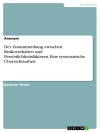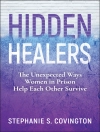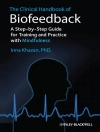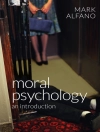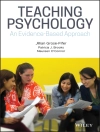Pseudoscience and Extraordinary Claims of the Paranormal: A Critical Thinker’s Toolkit provides readers with a variety of ‘reality-checking’ tools to analyze extraordinary claims and to determine their validity.
* Integrates simple yet powerful evaluative tools used by both paranormal believers and skeptics alike
* Introduces innovations such as a continuum for ranking paranormal claims and evaluating their implications
* Includes an innovative ‘Critical Thinker’s Toolkit, ‘ a systematic approach for performing reality checks on paranormal claims related to astrology, psychics, spiritualism, parapsychology, dream telepathy, mind-over-matter, prayer, life after death, creationism, and more
* Explores the five alternative hypotheses to consider when confronting a paranormal claim<
* Reality Check boxes, integrated into the text, invite students to engage in further discussion and examination of claims
* Written in a lively, engaging style for students and general readers alike
Ancillaries: Testbank and Power Point slides available at www.wiley.com/go/pseudoscience
Table of Content
About the Author.
Preface.
Acknowledgments.
Part I: Introduction.
1. The Continuum Mysteriosum.
Making Sense out of Mysteries: The Continuum Mysteriosum.
Extraordinary, Nonparanormal Mysteries.
An Invitation.
2. Why Study These Things?
The Dangers of Unexamined Paranormal Claims.
The Risk of Paranormal Passion and the Critical Thinker’s Toolkit.
Eight Reality-Checks: The Critical Thinker’s Toolkit.
Part II: The Critical Thinker’s Toolkit.
Evaluate Support for a Claim.
3. Reality Check: Are the Sources Credible?
Astrology.
Questionable Sources.
The Question of Authority.
When Experts Get It Wrong.
An Invitation to Question.
4. Reality Check: Is the Logic Valid and Sound?
Basic Logic.
Informal Logical Fallacies.
Premises, Logic, and Hypothesis Testing.
5. Reality Check: Are Claims Based on Observation (Scientific Tests and Theories)?
Observations.
Tests.
Theories.
Sagan’s Balance and the FEDS Standard.
Science and Alternative Hypotheses.
Consider Alternative Explanations.
6. Reality Checking for Oddities of Nature and the World of Numbers.
Probability Estimates and Bias.
Math Ignorance.
Coincidences.
The Clumpiness of Randomness.
The Law of Very Large Numbers.
Science and Chance.
Summary: Psychic Bias.
7. Reality Checking for Perceptual Error and Trickery.
Top-Down Processes and Perception.
Manipulations of Magicians and Psychics: The Cold Reading Toolkit.
Hypnotic Suggestion Enhancers.
8. Reality Checking for Memory Errors.
Memory Myths.
What Is Memory?
Memory Errors.
Déjà vu.
The Déjà vu Reality Check.
9. Reality Checking for the Placebo Effect.
What are Placebos?
Weak and Strong Placebos.
How Placebos Work.
Placebos and Superstitious Beliefs.
Placebo Controversies.
Placebos and Performance.
10. Reality Checking for Sensory Anomalies and Hallucinations.
Sensory Phenomena.
Migraines.
Tunnel Experiences.
Hallucinations.
Hallucinations and the Critical Thinker’s Toolkit.
Part III: The Paranormal Files.
11. Spiritualism and the Survival Hypothesis.
History of the Spiritualist Movement.
Impact of Spiritualism.
Spiritualism Today.
Research on Life after Death.
Research on Channeling and Mediums.
Conclusion.
12. Parapsychology.
The Language of Parapsychology.
Research on PSI.
Conclusion: The State of PSI Research.
13. Energy Treatments and Complementary and Alternative Medicine (CAM).
Contemporary Views of Energy: The Scientific Perspective.
Concepts of Energy in Children and Western History:Vitalism.
Chinese History and Energy: The Yin-Yang School.
Chinese Energy Treatments.
Western Energy Treatments.
Conclusion.
14. Supernatural Cures and Faith Healing.
The Varieties of Healing Experience.
The Evidence.
Conclusion.
15. Creationism, Intelligent Design, and God.
The Great Debate.
Things Great and Small.
16. The Reality Checkup: Using your Toolkit.
The Reality Checkup.
How to Carry on a Civilized Discussion about the Paranormal.
Parting Words: Pandora’s Challenge.
Appendix A. Complementary and Alternative Medicine.
Appendix B. Critical Thinking and Paranormal Resources.
Appendix C. Susan Blackmore on Paranormal Research.
Name Index.
Subject Index.
About the author
Jonathan C. Smith, Ph.D., is a Licensed Clinical Psychologist, Professor of Psychology at Roosevelt University, Founding Director of the Roosevelt University Stress Institute, and Head of the Pseudoscience and Paranormal Laboratory. Dr. Smith has published 17 books and has written numerous articles on stress, relaxation, meditation, and mindfulness, as well as spirituality and skepticism. In 1984 he founded the Roosevelt University Stress Institute primarily to combat pseudoscience in the field. He has created classroom and online classes specifically designed to teach critical thinking skills and evaluate extraordinary claims of the paranormal.


